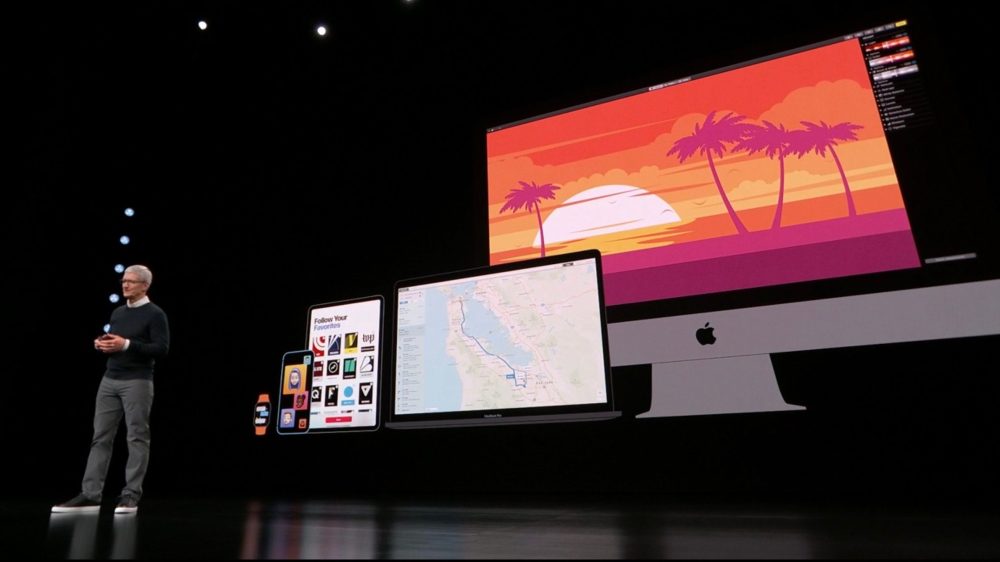Apple has announced the launch of its 2020 MacBook Air. It’s powered by Apple’s new M1 processor. This is the first MacBook Air, and one of the first laptops, to feature Apple’s own Arm-based CPUs, designed specifically for Macs.
The new MacBook Air starts at $999, the same price as the previous MacBook Air released in March. (That model appears to have been discontinued on Apple’s website.) It’s available November 17th, but you can order it today.
You might be interest Apple iMac $589

The base model includes a seven-core GPU and 256GB of storage, as well as 8GB of memory. Models with an eight-core GPU and 512GB of storage start at $1,249 (with 8GB of memory) — the maxed-out configuration with 16GB of memory and 2TB of storage is $2,049. For an extra $299.99 and $199.99 respectively, the machine can come preinstalled with Final Cut Pro X and Logic Pro X. Like its predecessor, it comes in gold, silver, and space gray.
The M1 chip is similar to the processor that’s in the recent iPhone 12 and iPad Air and is built on a different architecture than the Intel processors in the prior MacBook models. Apple says it has four high-performance cores and four high-efficiency cores — an effort to balance power and longevity. It also claims that the chip offers the world’s best performance per watt of any CPU, and enables instant wake speeds, so your laptop turns on as soon as you open it. All of that should add up to longer battery life and better performance than the prior model.
Design-wise, the new Air looks pretty similar to the MacBook Air we’ve seen before. It’s 2.8 pounds and 11.97 x 8.36 x 0.16-0.63 inches — the exact same weight and almost the same dimensions as its predecessor.
But Apple says the it’s faster than “98 percent of PC laptops sold in the last year.” It’s also up to 3.5 times faster than the MacBook Air released earlier this year, with up to five times faster graphics performance, nine times faster machine learning workloads, and two times faster SSD performance, per the company. Apple didn’t say how it measured these differences.
:no_upscale()/cdn.vox-cdn.com/uploads/chorus_asset/file/22027085/Apple_new_macbookair_wallpaper_screen_11102020.jpg)
Apple says you’ll get the longest battery life ever on a MacBook Air, with 15 hours of wireless web browsing and 18 hours of video playback to a charge, an increase of four and six hours, respectively, compared to the MacBook Air with an Intel chip. There’s no fan inside, so it should run noiselessly as well. (But we’ll have to see about the heat.)
In terms of specs, the new Air comes with the same 13.3-inch 2560 x 1600 Retina display with P3 wide color gamut support and 400 nits of brightness, a backlit Magic Keyboard and up to 16GB of memory and 2TB of storage. It supports Wi-Fi 6, Bluetooth 5.0, and Touch ID. There are two USB-C ports (which support charging, DisplayPort, Thunderbolt 3, and USB 3.1 Gen 2) as well as a headphone jack.
The laptop comes with the same 720p camera as its predecessor (a lower resolution than modern iPhone and iPad cameras), but Apple says it’ll deliver better results thanks to the M1’s new image signal processor (ISP), which should improve noise reduction, dynamic range, auto white balance, and face detection.
:no_upscale()/cdn.vox-cdn.com/uploads/chorus_asset/file/22027090/Apple_new_macbookair_gold_facetime_screen_11102020.jpg)
The release is the first step in Apple’s transition away from Intel processors, which Apple’s computers have used since 2006. The company expects the process to take two years.
The biggest advantage of Arm systems is that they’ll provide better battery life and efficiency over the Intel systems. They’ll also be able to run iOS and iPadOS apps natively on macOS. As for macOS apps: Apple has updated its own programs, such as Pages, Numbers, and Keynote, to support its silicon, as have other major companies like Microsoft and Adobe. At its June event, Apple demonstrated Lightroom and Photoshop running smoothly on the new processor — Lightroom is slated for release next month, and Photoshop early next year. And macOS Big Sur, which the Air will run, includes an emulator called Rosetta 2 that will “translate” any apps that haven’t yet been updated for Arm at launch.

COMMENTS